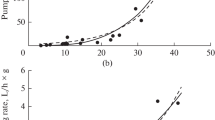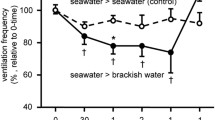Abstract
LOCOMOTION in the starfish Asterias forbesi involves many tube feet, each functioning independently as a hydrostatic skeleton; the circular muscles of the ampulla acting antagonistically to the longitudinal muscles of the tube foot itself through the constant volume of fluid contained in the ampulla–foot unit1. The fluid for each tube foot comes from the water vascular system to which each foot is connected through its own lateral canal. The water vascular system in Asterias consists of three interconnecting series of canals: (1) radial canals running the length of each arm; (2) a circular canal running around the gut at the base of the arms, and (3) the stone canal which runs from the radial canal up to the aboral (“dorsal”) surface, terminating in the madreporite. The madreporite, an orange disk, is porous and associated with several sets of cilia. For some time it has been presumed, and is still presented or indicated in some textbooks, that the fluid contained within the starfish water vascular system is pumped by ciliary activity through the madreporite into the canal system, although it has been pointed out that no experimental evidence supports this assumption2. lonically, the fluid within the water vascular system is nearly identical to the external seawater with the exception of internal K+, which is present in a concentration up to 60% higher than that of the seawater3,4. On the basis of this difference, it was suggested that K+ accumulation by the water vascular system is responsible for water uptake by this system, either by creating a slight osmotic gradient within the tube feet or by direct movement of water with hydrated K+ ions, as opposed to direct uptake of seawater through the madreporite5. We have investigated the generation of the fluid in the water vascular system more thoroughly by determining the osmotic and ionic characteristics of the fluid within the tube feet and the ionic transport characteristics of the isolated tube foot epithelium.
Similar content being viewed by others
References
Smith, J. E., Q. Jl Microsc. Sci., 88, 1–14 (1947).
Hyman, L. H., The Invertebrates: Echinodermata, 4 (McGraw-Hill, New York, 1955).
Robertson, J. D., J. exp. Biol., 26, 182–200 (1949).
Binyon, J., J. mar. Biol. Ass. U. K., 42, 49–64 (1962).
Binyon, J., J. mar. Biol. Ass. U. K., 44, 577–588 (1964).
Ramsay, J. A., Brown, R. H. J., and Croghan, P. C., J. exp. Biol., 32, 822–82 (1955).
Prusch, R. D., and Benos, D. J., J. Insect Physiol., 22, 629–632 (1976).
Fechter, H., Z. Vergl. Physiol., 51, 227–257 (1965).
Author information
Authors and Affiliations
Rights and permissions
About this article
Cite this article
PRUSCH, R., WHORISKEY, F. Maintenance of fluid volume in the starfish water vascular system. Nature 262, 577–578 (1976). https://doi.org/10.1038/262577a0
Received:
Accepted:
Issue Date:
DOI: https://doi.org/10.1038/262577a0
- Springer Nature Limited
This article is cited by
-
A Review of Biological Fluid Power Systems and Their Potential Bionic Applications
Journal of Bionic Engineering (2019)





